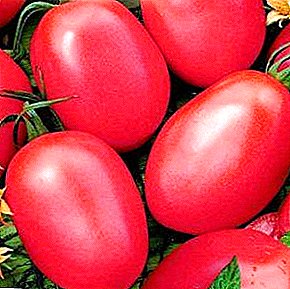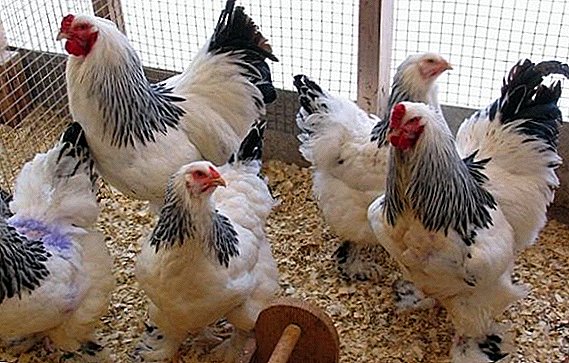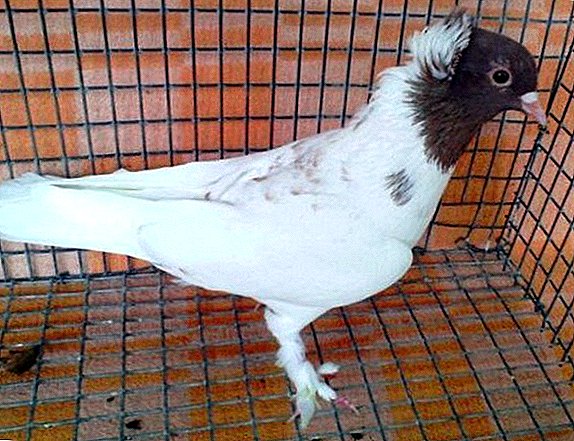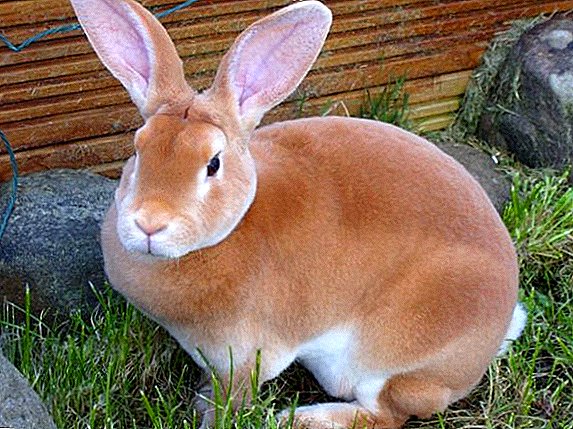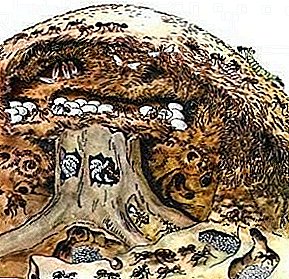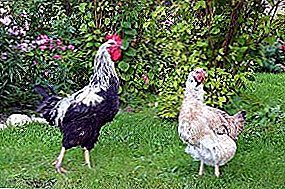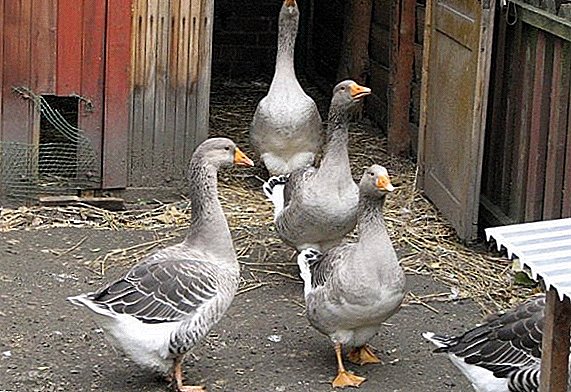 In many private farms breed geese. You need to know that this bird is most susceptible to various diseases with improper care. Consider one of the most common - diarrhea, which requires attention from the person, because it is often a signal of serious infections.
In many private farms breed geese. You need to know that this bird is most susceptible to various diseases with improper care. Consider one of the most common - diarrhea, which requires attention from the person, because it is often a signal of serious infections.
Why geese diarrhea
Geese, like all living creatures, need care and comfortable maintenance. Diarrhea can occur for several reasons:
- non-compliance with conditions of detention;
- improper nutrition.
Read about infectious and non-infectious diseases of geese.
Incorrect living conditions that cause diarrhea:
- drafts in the room;
- temperature below normal;
- high humidity in the house;
- poorly functioning ventilation;
- non-observance of sanitary rules in the room;
- non-compliance with vaccination;
- keeping sick birds along with healthy ones.
 Risk factors in nutrition:
Risk factors in nutrition:
- substandard feed;
- lack of vitamin-mineral complex.
Did you know? In 1924, the infection was detected and officially registered in the former USSR. Causative agent of diarrhea - stick in the shape of the letter D, which grows on meat-peptone agar.
Types of diarrhea
Depending on the causative agent, diarrhea is divided into:
- pullorosis - bacillary white diarrhea;
- colibacteriosis - frothy green diarrhea;
- pasteurellosis or cholera.
Consider all these types of diarrhea, symptoms and causes.
Bacillary white diarrhea
Pullorosis - a common infectious disease affecting the intestines, liver, kidneys and even the lungs. Causes of this type of diarrhea:
- dirt in the house;
- long transportation;
- lack of vitamins;
- hypothermia
 White diarrhea in geese. Pullorosis is especially sensitive to young geese. If you do not pay attention to the feces of birds, most of the livestock will die, because the infection occurs through droppings and eggs.
White diarrhea in geese. Pullorosis is especially sensitive to young geese. If you do not pay attention to the feces of birds, most of the livestock will die, because the infection occurs through droppings and eggs.
White diarrhea is of two types - congenital, infection occurs even in the egg and postnatal, infection occurs through the droppings of already born goslings. If the goose has been ill with pullorosis, then it is the carrier of the bacillus of this infection, since it remains in the egg-forming organs.
It will be useful for beginning poultry farmers to learn how to distinguish a gander from a goose, how long a goose sits on eggs and on what its egg production depends.
The causative agent of the disease is periodically secreted along with the eggs and can be found in all components of the egg, up to the shell. Also, pullose stick is transmitted through an infected person, water, food and bedding. Getting through the respiratory tract into the bloodstream, the infection passes into the liver, spleen, ovaries and causes inflammatory processes.  Signals of the onset of the disease can be:
Signals of the onset of the disease can be:
- lack of appetite;
- weakness and lethargy;
- wings are always down;
- feathers fall out;
- constantly open beak while breathing;
- in the area of cloaca fluff stuck together;
- disturbed coordination of movements;
- joint inflammation
- when walking legs wide apart;
- droppings with mucus.
The time from the beginning of infection and the appearance of signs of the disease is from 1 day to a week. You should contact your veterinarian and get a full consultation on the treatment of pullorosis.
Important! If diarrhea occurs due to malnutrition, you can feed the geese with chopped cabbage mixed with bran and with a small amount of tobacco ash. Ash is a universal first aid for geese from almost all diseases.
Frothy green diarrhea
Colibacteriosis - a disease of an infectious nature, the stick that causes its development, constantly living in the intestines of the bird and affecting mainly weakened young growth of an early age.  The disease is characterized by:
The disease is characterized by:
- increased body temperature;
- unwillingness to eat;
- drinking large amounts of water;
- liquid, frothy discharge green.
Find out why goslings die.
2-3-month-old goslings quickly weaken and fall to their feet, and in adult birds, loss of the oviduct is possible, and this is especially pronounced during egg-laying. Mortality of geese at this time reaches 20%. The main causes of colibacillosis are:
- high humidity of the room;
- substandard food;
- lack of water to drink;
- lack of ventilation;
- dirty inventory.
Sick birds need to be transplanted to another room at the time of the disease, since even the geese that had recovered still remain carriers of the infection. Veterinarian care for this disease is a must. The stick that dies at a temperature of + 60 ° C, as well as when processing the room with a 10% solution of lime or 5% solution of phenol, formalin.
The stick that dies at a temperature of + 60 ° C, as well as when processing the room with a 10% solution of lime or 5% solution of phenol, formalin.
Important! Unlike chickens, geese do not dig in the litter, therefore it is often necessary to sprinkle on fresh ingredients, thereby updating it. This will be one of the first preventive measures against diseases.
Diarrhea and flowing from the beak
Pasteurellosis (cholera or hemorrhagic septsemia) - a dangerous infectious disease that occurs in goslings at the age of 2-3 months. The causative agent of the disease is Pasteurella bacterium, which can be carried by wild birds - sparrows or pigeons, as well as people who ignore sanitary and hygienic norms. Symptoms that need to be addressed in order to take action on time:
- lethargy goslings;
- unwillingness to move;
- the desire to retire and hide his head under the wing;
- frequent breathing, with wheezing;
- discharge from the nasal openings;
- the stool is liquid, gray-green in color with blood interspersed.
Video: Pasteurellosis Geese The incubation period is from several hours to 5 days, and the disease can be characterized by:
- Super-sharp form - outwardly healthy bird dies suddenly, and the case continues with a geometric progression.
- Acute form - frothy nasal discharge, the temperature rises to 43 ° C, the bird has general weakness and thirst, lack of appetite and it also dies.
- Chronic form - appears after an acute course of the disease and manifests itself as viscous discharge from the nose and difficulty breathing. Adult geese develop arthritis, which leads to lameness and lowering of the wings. The disease lasts from 15 days to several months. After recovery, the bird is a peddler of the infection, although it itself becomes immune.
Learn how to build a winter goose with your own hands.
The infection develops in the cold season and its causes:
- high humidity;
- polluted water, feed;
- dirty items of care.

Diagnostics
The diagnosis is made on the basis of analyzes, examination of the source of infection, data from the examination of carcasses of dead birds. The source of infection is determined and the factors contributing to it are determined. Laboratory test adult birds every 12 days until a good result is obtained.
Did you know? At the age of three geese choose a pair, like the swans, once and for all. If one partner dies, the second is “mourning” for a very long time.
How to treat diarrhea in geese
With white diarrhea apply:
- 1% sulfadimezin, furazolidone within 14 days added to feed. Repeated course - in 3 days.
- sulfadimezin added to water.
When colibacteriosis is used:
- Neomecin - 50 g once a day with food for 6-10 days.
- Biomecin and tetracycline - 20 mg per 1 kg of goose weight.
- Levomycetin - 30 mg per 1 kg of bird weight.
- Baytril - 0.5 ml per 1 liter of drinking water for 3-5 days.
 When hemorrhagic septseemii apply:
When hemorrhagic septseemii apply:
- Levomitsetin - 5 mg per 1 kg of body weight for 5 days in feed.
- Levomycetin on fish oil - 300 mg per 100 ml. A dose of 30 mg per kilo of goose weight twice a day for 5 days.
- Sulfadimine - 0.2 g per bird in feed 2 times a day for 5 days.
- Sulfadimezin - 1% in drinking water.
How to feed
Nutrition - the main component for getting healthy and fast-growing birds. It must be complete and well balanced. In the first month of life, goslings are fed 7 times a day. Feeding mixture is made in milk with the addition of ground barley, boiled eggs, oats, millet, boiled potatoes, grated carrots and finely chopped greens.
It is useful to know how to feed the goslings from the first days of life and the better to feed the geese in the winter.
If the cause of diarrhea are worms, then antihelminthic drugs are added to the feed. For the prevention of small goslings it is necessary to drink a weak solution of manganese, which will also serve as a good tonic for the stomach.
Depending on the type of feeding, there are:
- dry;
- wet
- combined.
 The basis of the diet of all types are:
The basis of the diet of all types are:
- root vegetables and their tops;
- grass (in summer), silage (in winter);
- pumpkin, cabbage;
- a fish;
- milk serum.
Important! Goose from the whole vitamin kit needs retinol (A), vitamin D, tocopherol (E), riboflavin (B2) and acids - pantenonovaya and nicotinic.In summer, the number of feedings is two times. Being on a walking tour, geese eat up to 2 kg of green grass per day, which replaces one feeding. In winter, the geese are fed three times - early in the morning, at lunch and late in the evening. In winter, it is good to add to melenated spruce needles, which is a source of ascorbic acid. During the illness, the diet is strengthened with a vitamin complex for quick recovery.

Preventive measures
In order for the disease not to become grief and not to destroy all the livestock of the bird, it is necessary to follow certain rules:
- The bird house should correspond to the number of geese, be well lit and ventilated.
- The litter needs to be changed every two days; the remaining feed should be removed immediately after feeding. Also carry out cleaning of the territory for walking where the bird is most of the time.
- To keep small goslings separately from large ones, in groups of 7 chicks.
- Daily goslings are watered with a solution of manganese, as well as glucose to strengthen the immune system.
- Before the age of 10 weeks, different drugs are surely added to enhance immunity, such as biovit, vapor form or kormogrizin.
- In the diet you need to adhere to the alternation of feeding dry and wet food. Vitamins - required.
- Walking every day and swimming in clear water is a reliable remedy for diseases.
- Mandatory procedure - vaccination, is carried out by inactivated or live bacteria;
- If it is possible to take the bird to pasture, where she herself will find the right grass.
 The bird reacts to any disease with changes in behavior, and if you notice oddities, it is better to get expert advice in order to start treatment in time and avoid problems. And also, observing all the necessary rules for keeping geese, you will get not only a good increase in livestock for using tasty meat in your diet, but also a significant budget replenishment from selling geese, because goose meat is in demand in the market.
The bird reacts to any disease with changes in behavior, and if you notice oddities, it is better to get expert advice in order to start treatment in time and avoid problems. And also, observing all the necessary rules for keeping geese, you will get not only a good increase in livestock for using tasty meat in your diet, but also a significant budget replenishment from selling geese, because goose meat is in demand in the market.
Reviews




